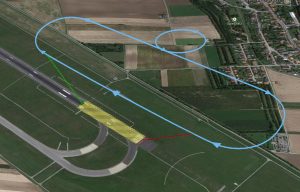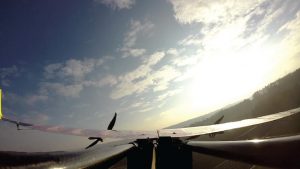After the first prototype was finished, the main focus was laid on the flight tests. Flight tests are important to prove the concept, to evaluate important parameters and to find areas of improvement.
The first tests took place at an airfield near Graz. The wind was calm, but due to the cold weather in January, the runway was covered with a thick layer of snow, which had to be removed first. After that, the aircraft was assembled and prepared for flight. The maiden flight was done by David Hasko, who is a student of the bachelor degree course. Due to his enormous experience with remotely piloted aircraft, the flight was successful and delivered important and valuable results.
It turned out, that the aircraft performs really well; especially the gliding properties are remarkable. At full thrust and level flight, the jA14 traveled at a velocity of approximately 100km/h. Another result was an extremely long endurance. The expected flight time was mainly assumed through static thrust tests and its analysis. Due to the pessimistic drag estimations, a better cooling of the engines and a better wing performance, the flight time increased in comparison to the predictions. The enhanced endurance made it possible to carry more payload than expected. The new estimations of flight time are in the area of 15min.
At the DBF contest in April, the aircraft will be controlled by Bernhard Schreckensperger, who is constantly training to fly the maneuvers optimal.


